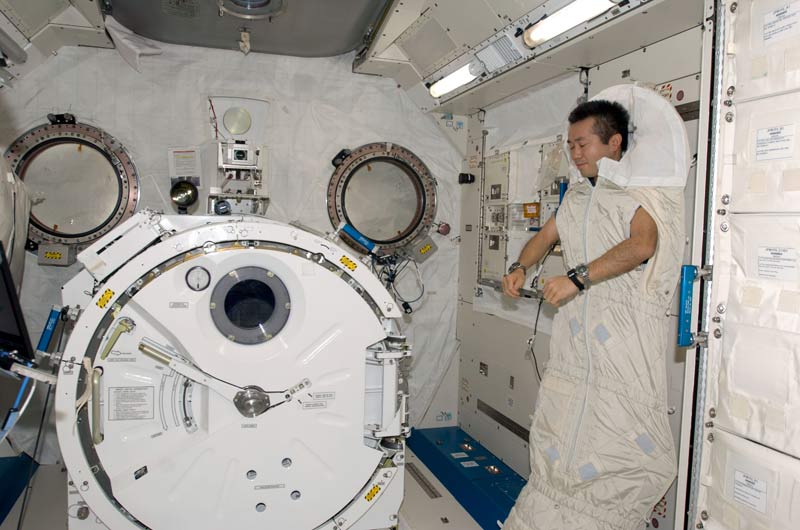Sleeping in Space is Easy, But There's No Shower

Astronauts may have some tough jobs in orbit - like building a $100 billion International Space Station - but apparently getting a good night's sleep isn't one of them.
In fact, sleeping is pretty comfy in space because you can slumber without gravity's incessant pull, according to Canadian astronaut Julie Payette, who has been living aboard the linked space station and shuttle Endeavour for more than a week.
"We sleep very well in space. Can you imagine?" Payette told reporters in a recent interview broadcast by NASA. "We have a sleeping bag each, and when you get into it you float in the sleeping bag. The sleeping bag floats in the module. So all you have to do is just attach it somewhere, which is a good idea by the way because during the night while your sleeping you might start drifting and end up somewhere you didn't intend to be in the first place."
Japanese astronaut Koichi Wakata, who is returning home aboard Endeavour after living on the station for 4 1/2 months, has said that anchoring yourself at night is key because otherwise you might bump into sensitive computers and equipment and switch them on accidentally.
Some astronauts have complained in the past that the first night's sleep in space can be fitful because their minds are racing ahead to the coming mission's complexity. But Endeavour's six-man, one-woman crew is in the homestretch of a 16-day spaceflight that included five challenging spacewalks to deliver spare parts and a Japanese experiment porch to the space station.
About the only thing missing, Payette said, is a shower. The thing that makes sleeping in space so comfortable - that weightless feeling - also makes it impossible to start the next morning with a refreshing shower.
"Of course, we're in weightlessness, so a showerhead with water dripping on top of your head would not work," Payette said. "We don't have a shower. We don't even have a faucet or a tap."
Get the Space.com Newsletter
Breaking space news, the latest updates on rocket launches, skywatching events and more!
NASA's first space station, Skylab, and Russia's Mir space station did include a shower facility for crewmembers. On Skylab, astronauts floated into the shower, pulled up a privacy curtain, and were able to shower in water from a push-button hose and dry off using a vacuum system.
But on the International Space Station and NASA shuttles, astronauts have a squirt gun that shoots water and a wash cloth. They also have a special rinse-less shampoo to keep their hair clean.
"We wash like we would if we were on an expedition or a camping trip or something," Payette explained. "It works."
Payette and her crewmates aboard Endeavour are slated to leave the space station on Tuesday and land Friday at NASA's Kennedy Space Center in Florida.
SPACE.com is providing continuous coverage of STS-127 with reporter Clara Moskowitz and senior editor Tariq Malik in New York. Moskowitz contributed to this report.Click here for mission updates and SPACE.com's live NASA TV video feed.
Join our Space Forums to keep talking space on the latest missions, night sky and more! And if you have a news tip, correction or comment, let us know at: community@space.com.

Tariq is the Editor-in-Chief of Space.com and joined the team in 2001, first as an intern and staff writer, and later as an editor. He covers human spaceflight, exploration and space science, as well as skywatching and entertainment. He became Space.com's Managing Editor in 2009 and Editor-in-Chief in 2019. Before joining Space.com, Tariq was a staff reporter for The Los Angeles Times covering education and city beats in La Habra, Fullerton and Huntington Beach. In October 2022, Tariq received the Harry Kolcum Award for excellence in space reporting from the National Space Club Florida Committee. He is also an Eagle Scout (yes, he has the Space Exploration merit badge) and went to Space Camp four times as a kid and a fifth time as an adult. He has journalism degrees from the University of Southern California and New York University. You can find Tariq at Space.com and as the co-host to the This Week In Space podcast with space historian Rod Pyle on the TWiT network. To see his latest project, you can follow Tariq on Twitter @tariqjmalik.









